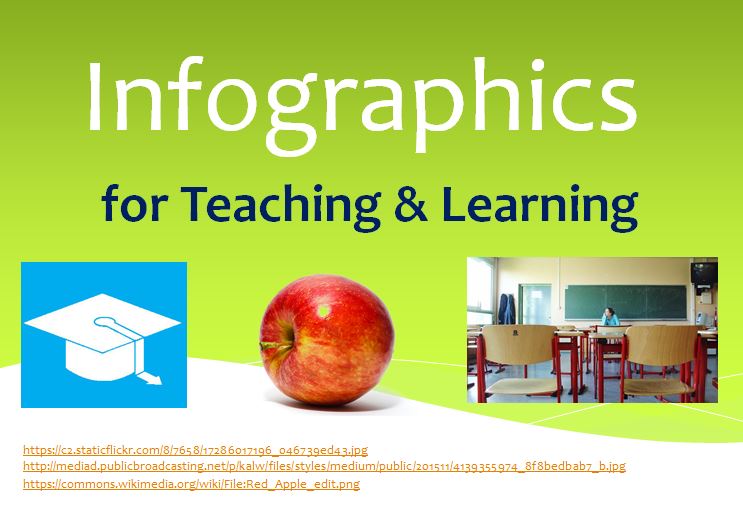It is often said that a picture is worth a thousand words, and in the case of education there is no doubt that this is the case. According to research by the Social Science Research Network, 65% of people learn mainly through images (they are what is called a “visual learner”). Also, it is estimated that the mind can process an image thousands of times faster than a written text. Within this framework, the use of educational infographics in class is a very powerful tool that can bring numerous benefits to your students , facilitating their learning process and stimulating their creativity. In this article, we tell you how to take advantage of this magnificent teaching resource.
Why infographics?
Images have great communicative potential . This is something we have known for millennia, and the history of art is a magnificent example of it. However, we currently live in the age of the image, so its importance is greater than ever. For this reason, more and more people, and from increasingly varied fields, understand the advantages of using infographics to transmit certain ideas or knowledge.
Infographics are a useful tool that allow generating and structuring knowledge in an attractive and versatile way. The schematic division of information, together with the use of striking images, lead to a quick and pleasant understanding of what is to be explained . The combined use of images and concepts also activates both the logical and verbal skills of the brain as well as the figurative and creative imagination, favoring the assimilation of the transmitted content.
Infographics in education
In the case of teaching, infographics offer particularly interesting possibilities. Today we know that not all people process verbal language with the same efficiency , and that reading comprehension is especially connected to attention span. In the case of students who have difficulties in these fields, infographics offer fantastic attention support .
Infographics are based on the student’s a priori knowledge to the extent that they can activate prior knowledge through the association of ideas, something that contributes to a better understanding of the explained content. In this way, they reduce the cognitive and memory load of these contents, while promoting creative thinking through aesthetic treatment and stimulating student motivation.
Of course, infographics are just one more tool, like so many others, and the best thing is to be able to combine them all according to the needs of our students. Now, if we use them properly, we can ensure that they will be of great use to us and our students!
How to use infographics in class?
Infographics offer a wide spectrum of applications in the classroom. In addition to being attractive to students of all ages, their characteristics make them highly adaptable to the needs of the course. It does not matter if it is about history or physics, literature or biology: infographics will always be a very useful educational element .
Infographics can be used to support an explanation or as a complement to other teaching materials. We can encourage students to analyze the data, interpret the information and draw conclusions from the infographic. We can also use an infographic to spark a discussion in class. Or we can even suggest that they make an infographic themselves with the information from the lesson, an excellent way to review content and work on their ability to synthesize.
How to make an infographic?
If you have proposed to introduce infographics in your classes but you don’t know where to start, don’t worry! It is much easier than it seems, and thanks to the internet we have at our disposal a large number of resources and templates that we can use. You just have to follow these simple steps:
PICK A TOPIC
Of course, it is essential to be clear about what we want to talk about, and also the tone that we are going to use.
RESEARCH AND SELECT THE INFORMATION
Infographics are characterized by their schematic nature, so it is also essential to carefully decide what information we include –and therefore, what we are going to leave out– . The content must be relevant, adjusted to the educational needs and level of our students, and as far as possible attractive and suggestive.
DEFINE THE AESTHETIC TREATMENT
How do you want the infographic to look like? Do you want it to be more casual and fun, or more serious? Do you want to use a particular color? What typology can fit? All these elements will depend on the character and tone you want to give to the infographic .
MAKE A SKETCH
Organize how you will arrange the information within the infographic. What parts will it include, how will we highlight important data, what images will we use to accompany it… It is essential that we think about how our students will perceive the infographic, and that we bear in mind that it will be a useful tool to the extent that it is attractive. For this reason, it is always preferable to reduce the amount of information to give more prominence to the conceptual structure , which will be of much greater help to students.
MAKE THE INFOGRAPHIC
Now you have everything ready to materialize all your ideas and shape the infographic! If you don’t have much design knowledge, you can use the many templates available on the internet . There are many platforms that can make your job easier. Some of the most popular are: Infogram , Piktochart , Genial.ly , Canva , Easel.ly , Visme … but there are many more, you will surely find the best option for you!
With these simple tips, you can start creating fantastic infographics that will become invaluable allies in your classes.

